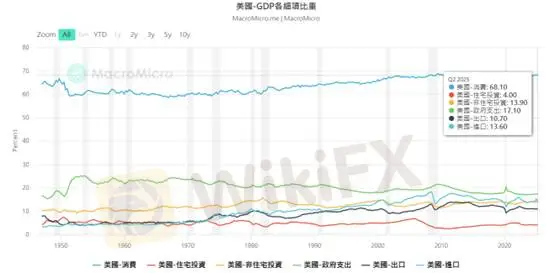简体中文
繁體中文
English
Pусский
日本語
ภาษาไทย
Tiếng Việt
Bahasa Indonesia
Español
हिन्दी
Filippiiniläinen
Français
Deutsch
Português
Türkçe
한국어
العربية
Emotional vs. Rational Approaches to Market Analysis
Zusammenfassung:In the realm of investing, most successful traders lean toward a rational approach: making evidence-based entries and exits, strictly enforcing stop-loss rules, managing capital effectively, and demon
In the realm of investing, most successful traders lean toward a rational approach: making evidence-based entries and exits, strictly enforcing stop-loss rules, managing capital effectively, and demonstrating exceptional error-correction skills. To survive and thrive in financial markets, one seemingly needs to integrate all these abilities to maintain control and ultimately reach success.
However, these are merely the traits of outstanding traders.
I believe that to truly succeed in the financial markets, one must also possess a touch of boldness — even a bit of “madness” — and emotional conviction. Investing should be seen as part of everyday life. Macroeconomic data reflects the “felt temperature” of the economy, not merely short-term bullish or bearish headlines. Holding on to this perspective helps avoid the common mistakes of buying at peaks and selling at troughs.
In my view, the true value of market success lies in capturing a few substantial wins amid numerous losing trades — enough to meaningfully grow total equity. Mastering the essence of macroeconomic trends increases the likelihood of victory. This is why, back in April, we disregarded recession warnings and maintained a bullish stance, even through deeper market declines.
Today, with equity markets continuing to set new highs, were advising investors that consumer spending is likely entering a short-term “pain period.” However, once this phase passes, we anticipate the U.S. entering another exuberant economic cycle.
Over the next four years, the U.S. economy is poised for structural transformation. Rooted in former President Trumps vision for a manufacturing revival and deficit reduction, GDP growth will hinge on increased domestic investment, higher government spending, rising exports, and reduced private consumption and imports.
U.S. GDP Composition Highlights
2025 Q1 Real GDP Growth: 2.0%
Consumption: 68.3%
Residential Investment: 4.1%
Non-Residential Investment: 13.80%
Government Spending: 17.20%
Exports: 10.90%
Imports: 15.10%
2025 Q2 Real GDP Growth:
Consumption: 68.1%
Residential Investment: 4.0%
Non-Residential Investment: 13.90%
Government Spending: 17.10%
Exports: 10.70%
Imports: 13.60%

(Figure 1: U.S. GDP Composition, Q1 2025; Source: M Square)

(Figure 2: U.S. GDP Composition, Q2 2025; Source: M Square)
The U.S. domestic market remains strong, but its heavy reliance on end-user consumption — rising from 66.8% during the Biden administration to 68.1% today — has allowed foreign economies to continually profit from American demand. Consumption growth is now at its highest level since the 1950s.
Trump has publicly criticized excessive American consumerism, advocating for more frugality to support domestic economic policy. For example, he once remarked, “A girl doesnt need 30 dolls — one or two are enough.”
Meanwhile, both residential and non-residential investment remain below 2000s levels, highlighting an asymmetrical structure of “excess consumption, insufficient domestic investment.” This is why Trumps reciprocal tariff policy included conditions for foreign nations to invest in the U.S., aiming to prevent industrial hollowing and foster a healthy cycle of investment-driven growth.
While foreign investment commitments are rising, their positive effects on GDP will take time to materialize. In the short term, cooling consumption is what most investors fear could trigger a market downturn.
In summary, while current consumption-driven prosperity has pushed the U.S. economy to historical highs, the imbalance between consumption and investment remains a structural weakness. Trumps policies to revive manufacturing and repatriate overseas capital aim to correct this by boosting domestic investment and exports while curbing excessive consumption and imports. Though consumption cooling may raise short-term concerns, a shift toward investment-led growth could usher in a new phase of sustainable U.S. economic expansion.
Silver Technical Analysis

Silver has broken below its minor ascending channel, shifting into a sideways consolidation phase. Trading bias should pivot from bullish to neutral-to-bearish. With prices having fallen below $38.24, attention now turns to the near-term support at $37.85. If $37.85 is breached intraday and rebounds fail to reclaim that level, the market will likely form a new downward channel, signaling a possible structural decline.
Stop Loss Suggestion: $0.50
Support: $37.85
Resistance: $38.24
Risk Disclaimer: The above views, analyses, research, prices, or other information are provided solely as general market commentary and do not represent the position of this platform. All readers should bear full responsibility for their own decisions. Please trade with caution.
Haftungsausschluss:
Die Ansichten in diesem Artikel stellen nur die persönlichen Ansichten des Autors dar und stellen keine Anlageberatung der Plattform dar. Diese Plattform übernimmt keine Garantie für die Richtigkeit, Vollständigkeit und Aktualität der Artikelinformationen und haftet auch nicht für Verluste, die durch die Nutzung oder das Vertrauen der Artikelinformationen verursacht werden.
WikiFX-Broker
Aktuelle Nachrichten
Disney-CEO Bob Iger über KI: So kann Künstliche Intelligenz das Streaming-Erlebnis verbessern
Wechselkursberechnung



